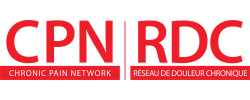| Return |
Patient Evidence Summary

Doctor, I have lower back pain, can using the SELFBACK app help to reduce my pain?
The SELFBACK app (delivers daily educational messages and weekly reminders about activities such as exercise based on the person's reported symptoms) reduced back pain for about half of the people who tried it.
What is the evidence?
SUMMARY OF FINDINGS
SELFBACK app plus usual care vs usual care alone for treatment of lower back pain
| Outcome at 3 months | SELFBACK app | Usual Care | Effect |
|---|---|---|---|
| RMDQ score | Score dropped from average of 10.4 to 6.7 | Score dropped from average of 10.4 to 7.4 | RMDQ score in people who used the SELFBACK app dropped by an average of 0.8 points more than people who received usual care alone |
| Percentage of people who had a score improvement of at least 4 points | 52 people out of 100 | 39 people out of 100 | About 13 more people out of 100 who used the SELFBACK app had a 4-point* improvement than people who received usual care alone |
RMDQ (Roland-Morris Disability Questionnaire) is a score used to measure how much back pain interferes with physical activity, ability to do daily activities, and sleep (scores range from 0 to 24; higher score = more pain-related disability).
*a change in score of at least 2-4 points is considered an improvement that most people would notice
What kind of study was this?
This was a randomized controlled trial.
Who? This study included 461 people who had non-specific lower back pain for at least 8 weeks and scored 6 points or higher on the Roland-Morris Disability Questionnaire (score used to measure how much back pain interferes with physical activity, ability to do daily activities, and sleep). Scores range from 0 to 24 with a higher score = more pain-related disability. People who were unable to perform physical exercise, had fibromyalgia or previous spinal surgery were excluded. To participate, people also had to have access to a smartphone and email.
What? The study compared SELFBACK app plus usual care with usual care alone.
SELFBACK app plus Usual care | vs | Usual care |
|---|---|---|
Face-to-face meeting to give instructions on installing the app and to ask participants to wear a step-detecting wristband The SELFBACK app sent weekly self-management recommendations on: physical activity (number of steps), strength and flexibility exercises, and daily educational messages. The messages were tailored to the participants symptoms and progression of symptoms. Use of push notifications from the app were encouraged but not mandatory. Participants were also instructed to follow any advice or treatment offered by their usual clinician. | Any advice or treatment offered by their usual clinician |
Why was this research done?
Lower back pain that cannot be linked to a specific cause is a common problem that can be difficult to treat. The researchers in this study wanted to know if a smartphone app that used symptoms reported by people suffering from back pain to provide personalized education and reminders about exercise and walking would reduce back pain. They found that about half of the people who used the app, experienced a noticeable improvement in their symptoms. Further research is needed to understand these findings and to improve the app.
This Evidence Summary is based on the following article:
Sandal LF, Bach K, Overas CK, et al. Effectiveness of App-Delivered, Tailored Self-management Support for Adults With Lower Back Pain-Related Disability: A selfBACK Randomized Clinical Trial. JAMA Intern Med. 2021 Aug 2. pii: 2782459. doi: 10.1001/jamainternmed.2021.4097. PubMed
Published: Friday, October 8, 2021
Please note that the information contained herein is not to be interpreted as an alternative to medical advice from a professional healthcare provider. If you have any questions about any medical matter, you should consult your professional healthcare providers, and should never delay seeking medical advice, disregard medical advice or discontinue medication based on information provided here.
|
This Evidence Summary was printed from the PAIN+ CPN website on 2025/04/01. To view other Evidence Summaries or to register to receive email notifications about new Evidence Summaries, please visit us at https://www.painpluscpn.ca/Articles/EvidenceSummaries |

|






 , McMaster University
, McMaster University